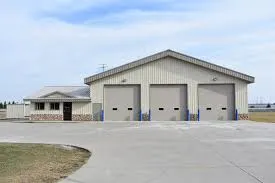- Afrikaans
- Albanian
- Amharic
- Arabic
- Armenian
- Azerbaijani
- Basque
- Belarusian
- Bengali
- Bosnian
- Bulgarian
- Catalan
- Cebuano
- Corsican
- Croatian
- Czech
- Danish
- Dutch
- English
- Esperanto
- Estonian
- Finnish
- French
- Frisian
- Galician
- Georgian
- German
- Greek
- Gujarati
- Haitian Creole
- hausa
- hawaiian
- Hebrew
- Hindi
- Miao
- Hungarian
- Icelandic
- igbo
- Indonesian
- irish
- Italian
- Japanese
- Javanese
- Kannada
- kazakh
- Khmer
- Rwandese
- Korean
- Kurdish
- Kyrgyz
- Lao
- Latin
- Latvian
- Lithuanian
- Luxembourgish
- Macedonian
- Malgashi
- Malay
- Malayalam
- Maltese
- Maori
- Marathi
- Mongolian
- Myanmar
- Nepali
- Norwegian
- Norwegian
- Occitan
- Pashto
- Persian
- Polish
- Portuguese
- Punjabi
- Romanian
- Russian
- Samoan
- Scottish Gaelic
- Serbian
- Sesotho
- Shona
- Sindhi
- Sinhala
- Slovak
- Slovenian
- Somali
- Spanish
- Sundanese
- Swahili
- Swedish
- Tagalog
- Tajik
- Tamil
- Tatar
- Telugu
- Thai
- Turkish
- Turkmen
- Ukrainian
- Urdu
- Uighur
- Uzbek
- Vietnamese
- Welsh
- Bantu
- Yiddish
- Yoruba
- Zulu
Nov . 10, 2024 13:38 Back to list
Factory Building Design Key Considerations for Modern Industrial Spaces
In today’s rapidly evolving industrial landscape, the design of factory buildings plays a crucial role in enhancing operational efficiency, ensuring worker safety, and promoting sustainability. As manufacturing processes become increasingly automated and complex, it is imperative that factory designs adapt to meet these new challenges. This article explores essential considerations in factory building design, highlighting the importance of functionality, flexibility, sustainability, and employee well-being.
Functionality and Workflow Optimization
The primary purpose of any factory building is to facilitate production. Therefore, the layout should be strategically planned to enhance workflow and minimize bottlenecks. An effective factory design integrates various components such as production lines, storage areas, loading docks, and administrative offices. The flow of materials and personnel should follow a logical sequence to reduce handling time and increase overall productivity.
For instance, Lean manufacturing principles can be applied to eliminate waste in processes. This approach emphasizes organizing spaces in a way that promotes efficiency, such as placing machinery and tools in close proximity to the production area. Moreover, incorporating advanced technologies like automated guided vehicles (AGVs) can streamline material transportation, further optimizing the production line.
Flexibility to Adapt to Change
In an era where market demands fluctuate rapidly, flexibility in factory design becomes essential. A static design may find it challenging to accommodate new processes, technologies, or products. Therefore, modular design concepts are increasingly favored in factory construction. These concepts allow for easy expansion or reconfiguration of spaces to meet evolving operational needs without significant disruption or additional costs.
For example, using movable walls or modular equipment can allow manufacturers to quickly pivot to different production lines or increase output capacity. This adaptability not only enhances operational efficiency but also provides a competitive edge in a fast-paced market.
factory building design

Sustainability and Environmental Considerations
Sustainability in factory design is not just a trend; it is a strategic necessity. With the growing focus on environmental impact, factories must incorporate sustainable practices into their design and operations. This includes energy-efficient systems, water conservation measures, and the use of sustainable materials.
The integration of renewable energy sources, such as solar panels or wind turbines, can significantly reduce a factory’s carbon footprint. Additionally, designing buildings with natural ventilation, efficient insulation, and energy-efficient lighting systems can lower energy consumption and enhance indoor air quality. Further, incorporating green roofs or eco-friendly landscaping can promote biodiversity and enhance the aesthetic appeal of industrial areas.
Employee Well-Being and Safety
Lastly, the design of factory buildings must prioritize employee well-being and safety. Research has shown that a positive work environment not only boosts morale but also enhances productivity. Adequate lighting, comfortable break areas, and access to natural light can contribute significantly to employee satisfaction.
Moreover, safety should be at the forefront of any factory design. Proper planning of emergency exits, fire safety systems, and ergonomic workstations can significantly reduce accidents and injuries in the workplace. Incorporating advanced safety features, such as air quality monitoring systems and noise reduction technologies, can further protect employees’ health.
Conclusion
In conclusion, factory building design is a multifaceted discipline that requires careful consideration of functionality, flexibility, sustainability, and employee well-being. As industries continue to evolve, investing in thoughtful design will not only improve operational efficiency but also contribute to a sustainable future. By prioritizing these key elements, manufacturers can create modern industrial spaces that meet today’s challenges while preparing for tomorrow’s opportunities. The factory of the future is not just a place of production; it is a dynamic environment that fosters innovation and growth while ensuring the health and safety of its workforce.
-
How Do Prefabricated Steel Structures Transform Modern Construction?
NewsJul.14,2025
-
How Do Prefabricated Metal Buildings Redefine Modern Construction?
NewsJul.14,2025
-
How Do Prefab Insulated Metal Buildings and Steel Structures Revolutionize Modern Construction?
NewsJul.14,2025
-
How Do Pre - Engineered Steel Structures Redefine Modern Construction?
NewsJul.14,2025
-
Advancing Modular Construction with Prefabricated Metal Structures
NewsJul.14,2025
-
Advancing Industrial Infrastructure with Prefabricated Steel Solutions
NewsJul.14,2025
Products categories
Our Latest News
We have a professional design team and an excellent production and construction team.












